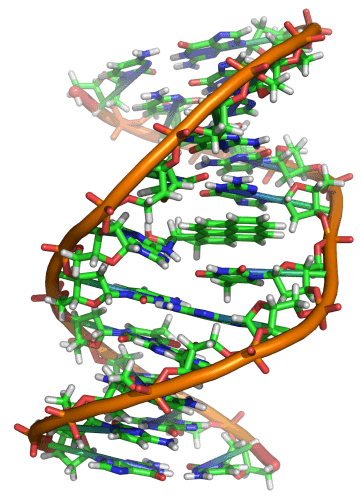It turns out that DNA, like other evidence used for criminal identification, can be misleading

In December 2012, a homeless man named Lukis Anderson was accused of murdering Ravish Kumra, a multimillionaire resident of Silicon Valley, based on DNA evidence. Had he been convicted, Anderson would have faced the death penalty. But Anderson was innocent. And he had a solid alibi: on the night of the murder, which happened in November of that year, Anderson was admitted to the hospital drunk and almost unconscious and was under continuous medical supervision throughout the night. At a later stage, the defense team representing Anderson learned that his DNA arrived at the crime scene through the paramedics who were called to Kumara's home. Earlier that day, the paramedics treated Anderson, and without their knowledge "planted" the suspicious evidence at the crime scene that happened more than three hours later. The case, which was presented in February 2016 at the annual conference of the American Academy of Forensic Science in Las Vegas, is a clear example of the incrimination of an innocent person due to the random transfer of DNA to a crime scene. Following this case and other similar cases, more and more voices are being heard calling for the criminal justice system, which too often relies on DNA as definitive evidence, to change its approach and recognize the inherent danger of distorting the law.
Since almost all forensic identification methods have come under sharp scientific criticism in recent years, especially comparative methods, for example, of bite marks or microscopic analysis of hairs, the power of DNA evidence has increased, and not for nothing. DNA analysis provides more absolute and less subjective results than other forensic methods, since it is based on statistical models. Examining specific gene regions or sites in the human genome allows researchers to determine the likelihood that any evidence matches or does not match a known genetic profile of a crime victim, crime suspect or alleged offender. Moreover, by examining the prevalence of a particular genetic pattern in population databases, researchers can predict how well-founded and evidential the match is. Since the mid-90s, a non-profit legal organization has been operating in New York The Innocence Project The effort to vindicate the innocent who were convicted for no wrongdoing. The organization once again conducts analyzes of available DNA samples to examine the validity of convictions, and so far has managed to obtain about 200 convictions and mobilize widespread public support in calling for reform in the US criminal justice system.
However, like any legal evidence, DNA is only part of a wider picture. "We hope with all our hearts that DNA will save the day, but the problem is that the whole system is fundamentally flawed," says Irene E. Murphy, a law professor at New York University and author of the book Inside the Cell: The Dark Side of Forensic DNA, which was published in 2015 [dealing with the dark side of the use of DNA as legal evidence]. "If the method is applied comprehensively, without proper skepticism and consideration, the distortion of the law is inevitable." For example, biological samples can deteriorate over time or become contaminated; Judges and juries may misinterpret statistical probabilities. And as Anderson's case shows, skin cells can move from place to place.

In 1997, researchers proved for the first time that it is possible to extract genetic information about a person based on skin cells he left behind on some object. Since then, this type of evidence based on traces found at a crime scene, also known as touch DNA, is increasingly used in forensics, and such DNA samples are routinely collected from surfaces such as doorknobs or gun butts. (In some US jurisdictions, such as Harris County, Texas, the number of cases in which DNA samples are collected from surfaces and submitted for laboratory analysis more than tripled between 2009 and 2013, and this is often done to locate suspects in property crimes such as theft, robbery or Hacking.) Commercial companies are currently selling law enforcement agencies kits that allow the production of a complete genetic profile of a person based on a sample of single skin cells, sometimes only three to five cells. Independent laboratories and scientists involved in, for example, identifying bodies found long after death are also helped by these kits.
Until recently, DNA samples of this type were considered conclusive proof of direct contact. But the studies that show that DNA does not always remain at the place of contact are multiplying. For example, a person who carries with him a handkerchief that was used to wipe another person's neck, can carry that person's DNA and transfer it to some object that the other person has never touched. This is reported in a study published in early 2016 in the International Journal of Forensic Medicine. A similar scenario is described by Cynthia M. Kyle, a graduate student in human biology at the University of Indianapolis in an article she recently published in the Journal of Forensic Science. In the article, she details a case of a man who used a knife to cut steaks, who transferred another man's DNA to the handle of the knife after shaking his hand. In fact, in a fifth of the cases investigated by Kyle, it turned out that the person identified as the main source of the DNA sample never touched the knife. The research team of Kyle and her colleagues is just one of several teams working to measure how easily skin cells move from one place to another and how long they stay where they have been moved. "What you find at the crime scene is what's there," says Kyle, "but the question is how the genetic profile is used, and how it is presented in court, and here we must exercise caution."
At the American Academy of Forensic Science conference held in Las Vegas, Kelly Kulik, the representative of the public defender's office in Santa Clara County, California, hypothesized that Anderson's DNA traces were transferred to the murder scene on the uniforms of the paramedics who treated him. So far it is not known how common are the cases where the transfer of DNA from one scene to another leads to a wrongful conviction. "Indeed, it seems that clear cases of wrongful conviction are quite rare, but in my opinion the phenomenon is more common than it is common to think," says Jennifer Friedman, a lawyer from the Los Angeles Public Defender's Office and an expert on DNA evidence. "The problem is that we don't often have the opportunity to prove beyond any doubt that DNA transfer did occur."
The misinterpretation of the DNA sample in Anderson's case was a contentious issue in the trial of the two defendants now on trial for the murder of Kumara, Kulik says. There is no doubt that DNA evidence is still a valuable tool in criminal investigations, but both forensic experts and jurists emphasize that additional supporting factual evidence is needed to determine guilt or innocence. Like any other evidence, DNA provides only one circumstantial clue in the investigation of a crime mystery. And since that, Anderson's case serves as a warning against asking us to forge our fates based on just a few stray skin cells.

2 תגובות
You saw DNA is not directly incriminating, it throws the burden of proof on the suspect to give a reasonable explanation, but the DNA arrived at the scene of the crime.
It's a shame that the title is misleading, and it may imply that DNA trace comparison is misleading.
In this story, the DNA test showed that this person's DNA was indeed found at the scene. The fact that the police hesitated to translate this into "he was here and also murdered" is just a misinterpretation.
Sometimes people only read headlines - and may get the wrong impression from them. Imagine that the person who read such a title is a judge or a police officer....